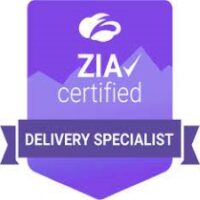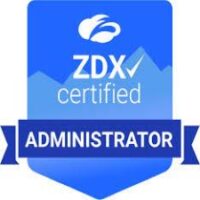Headlines across Europe are currently dominated by rising inflation and price increases on everything from consumer goods and services to fuel and energy. The region is experiencing a significant growth in energy prices due to relentless geopolitical, environmental, and economic pressures.
Within this context, data centers emerge as massive consumers of energy, and such market changes can have an enormous impact on IT infrastructure costs. The industry is facing an energy challenge that could have significant financial repercussions through the entire chain, affecting end users, businesses, and partners alike.
Global data center workloads more than trebled between 2015 and 2022, while power efficiency improvements have stalled, thus driving up electricity demand. The estimated global data center electricity consumption in 2022 was 240-340 TWh, accounting for approximately 1-1.3% of global electricity demand. This is projected to surge.
The rise in energy prices inevitably contributes to the escalation of total data center operating costs. Even a marginal increase of 0.01 per kWh in average electricity unit prices can lead to a 0.2% surge in on-premises data center Total Cost of Ownership (TCO). Alarming projections indicate that by 2028, energy costs could represent as much as 17% of a data center’s TCO, compared to around 3.5% in 2019.
While companies have limited control over energy prices, they can explore opportunities to mitigate the risk of rising expenses. Migrating applications to public clouds presents a viable option to reduce on-premises operating costs and energy consumption.
Protect your IT budget from energy cost increases
One of the solutions is to lock in electricity prices at today’s rates and shift the challenge of driving efficiencies to a third party. Many businesses are already implementing longer-term fixed contracts with either their electricity supplier or co-location provider. However, it is essential to acknowledge that this approach, while offering partial relief, does not fully address the challenges of improving data center efficiency and reducing the organization’s carbon footprint. Moreover, these long-term energy contracts come at a price premium.
Moving workloads from the data center to the cloud is one of the best ways to reduce on premises operating costs and energy consumption. For example, migrating to VMware Cloud can result in a 73% reduction in the data center infrastructure’s carbon footprint and cut energy consumption costs by a substantial 30%. Beyond cost savings, VMware Cloud enables organizations to run a more efficient IT estate and access native public cloud services seamlessly.
The key to achieving these significant savings lies in the unique advantages of VMware Cloud:
VMware Cloud requires fewer resources to run the same workloads compared to on-premises solutions. This is largely due to higher utilization and more efficient nodes to run the workloads
Hyperscaler data centers in which these nodes reside have world-class PUE (Power Usage Effectiveness) of approximately 1.05 – 1.11 and prioritize the use of renewable or clean energy wherever feasible
While the migration of workloads to the cloud offers numerous benefits, organizations acknowledge that this path can be fraught with challenges. Concerns may arise, including runaway migration costs, delays, performance impacts, and operational security issues. For a seamless and successful migration experience, organizations require an effective partner capable of guiding them through the process with minimal risk and maximum efficiency.
How can VMware Cloud support more energy efficient and cost-effective IT?
VMware Cloud offers a unified and simplified approach to building, deploying, operating, accessing, and securing applications on any cloud from any device. Customers can deploy applications on their preferred public cloud, such as AWS, Azure, Google, or Oracle Cloud, with fast, simple, and consistent migration paths. Utilizing existing tools and skillsets, businesses can seamlessly move workloads between on-premises and cloud environments without the need for new investments.
Compare on premises running costs to VMware Cloud with our TCO model
Weighing the financial considerations of owning and operating a data center versus running the workloads on cloud infrastructure requires a comprehensive analysis. TCO analysis helps companies gain better understanding of the true costs and benefits associated with moving to the cloud compared to staying on-premises. By conducting the TCO analysis, organizations can make informed decisions that align with their business goals and budget constraints. This analysis can also reveal hidden or overlooked costs such as facilities costs (e.g. power and cooling), migration, support and maintenance costs associated with capital expenditure.
VMware offers a robust framework and tools, enabling organizations to compare the on-premises costs against VMware Cloud costs and identify potential savings. Migrating to VMware Cloud can result in an average cost saving of €1.1m* over a three-year period and reduce migration timelines by 32 months compared to directly migrating to native cloud. Furthermore, the framework can also provide estimates on the length of time required to migrate on premises workloads to native public cloud environments using a given set of resources.
Summary and key takeaways
The current macro factors, such as geopolitical conflict, climate change, changing consumption patterns, and increased demand, directly impact electricity unit prices and data center operating cost. Although organizations have limited control over these external factors, they can actively plan and implement strategies to mitigate the impacts of price rises.
Migrating workloads to the cloud presents a compelling solution for reducing both costs and carbon footprint. The highly efficient hyperscaler data centers consume less power and prioritize the use of renewable energy sources where possible, resulting in overall reduction of carbon footprint. This strategy helps address sustainability goals that have been a key boardroom topic, with organizations increasingly focused on how to operate their businesses more efficiently.
Embracing VMware Cloud helps organizations achieve several key objectives:
Accelerate cloud adoption, enabling them to reach the cloud faster and more efficiently
Reduce their data center TCO costs by an average of 30-32%
Protect their budget and operating expenses from short-term energy price increases
Lower their net carbon footprint
Eliminate repetitive tasks, such as hardware and software installation, operational and maintenance tasks to focus on more strategic activities and enhance overall productivity.
Check out this 10-min video, that analyses the forces behind escalating energy prices and highlights the cost and energy savings as well as other gains from workload migration to VMware Cloud.
Eager to delve deeper into this subject, explore an in-depth TCO analysis and witness real-life examples? Watch this webinar on-demand.
If you are ready to take the next step in reducing your data center energy costs, check out the savings your business could make with VMware Cloud by running a TCO analysis here.
*Based on a representative example showing the comparative TCO results for an on-premises data center and VMware Cloud migration for 32 months. The power price for Germany as of May 2023 (€0.42 per kWh) was used in the calculations.
The following data sources formed the foundation for this article:
GPP @ Statista 2023
BDEW Strompreisanalyse 2022
WattTime.org
EPA Calculations & References
2030 Euro Datacenter Commitment
The post Tackling the energy challenge in Europe: How organizations are reducing their electricity costs and carbon footprint by migrating workloads to the cloud appeared first on VMware Cloud Blog.
Headlines across Europe are currently dominated by rising inflation and price increases on everything from consumer goods and services to fuel and energy. The region is experiencing a significant growth in energy prices due to relentless geopolitical, environmental, and economic pressures. Within this context, data centers emerge as massive consumers of energy, and such market … Continued
The post Tackling the energy challenge in Europe: How organizations are reducing their electricity costs and carbon footprint by migrating workloads to the cloud appeared first on VMware Cloud Blog. Read More VMware Cloud Blog
Headlines across Europe are currently dominated by rising inflation and price increases on everything from consumer goods and services to fuel and energy. The region is experiencing a significant growth in energy prices due to relentless geopolitical, environmental, and economic pressures.
Within this context, data centers emerge as massive consumers of energy, and such market changes can have an enormous impact on IT infrastructure costs. The industry is facing an energy challenge that could have significant financial repercussions through the entire chain, affecting end users, businesses, and partners alike.
Global data center workloads more than trebled between 2015 and 2022, while power efficiency improvements have stalled, thus driving up electricity demand. The estimated global data center electricity consumption in 2022 was 240-340 TWh, accounting for approximately 1-1.3% of global electricity demand. This is projected to surge.
The rise in energy prices inevitably contributes to the escalation of total data center operating costs. Even a marginal increase of 0.01 per kWh in average electricity unit prices can lead to a 0.2% surge in on-premises data center Total Cost of Ownership (TCO). Alarming projections indicate that by 2028, energy costs could represent as much as 17% of a data center’s TCO, compared to around 3.5% in 2019.
While companies have limited control over energy prices, they can explore opportunities to mitigate the risk of rising expenses. Migrating applications to public clouds presents a viable option to reduce on-premises operating costs and energy consumption.
Protect your IT budget from energy cost increases
One of the solutions is to lock in electricity prices at today’s rates and shift the challenge of driving efficiencies to a third party. Many businesses are already implementing longer-term fixed contracts with either their electricity supplier or co-location provider. However, it is essential to acknowledge that this approach, while offering partial relief, does not fully address the challenges of improving data center efficiency and reducing the organization’s carbon footprint. Moreover, these long-term energy contracts come at a price premium.
Moving workloads from the data center to the cloud is one of the best ways to reduce on premises operating costs and energy consumption. For example, migrating to VMware Cloud can result in a 73% reduction in the data center infrastructure’s carbon footprint and cut energy consumption costs by a substantial 30%. Beyond cost savings, VMware Cloud enables organizations to run a more efficient IT estate and access native public cloud services seamlessly.
The key to achieving these significant savings lies in the unique advantages of VMware Cloud:
VMware Cloud requires fewer resources to run the same workloads compared to on-premises solutions. This is largely due to higher utilization and more efficient nodes to run the workloads
Hyperscaler data centers in which these nodes reside have world-class PUE (Power Usage Effectiveness) of approximately 1.05 – 1.11 and prioritize the use of renewable or clean energy wherever feasible
While the migration of workloads to the cloud offers numerous benefits, organizations acknowledge that this path can be fraught with challenges. Concerns may arise, including runaway migration costs, delays, performance impacts, and operational security issues. For a seamless and successful migration experience, organizations require an effective partner capable of guiding them through the process with minimal risk and maximum efficiency.
How can VMware Cloud support more energy efficient and cost-effective IT?
VMware Cloud offers a unified and simplified approach to building, deploying, operating, accessing, and securing applications on any cloud from any device. Customers can deploy applications on their preferred public cloud, such as AWS, Azure, Google, or Oracle Cloud, with fast, simple, and consistent migration paths. Utilizing existing tools and skillsets, businesses can seamlessly move workloads between on-premises and cloud environments without the need for new investments.
Compare on premises running costs to VMware Cloud with our TCO model
Weighing the financial considerations of owning and operating a data center versus running the workloads on cloud infrastructure requires a comprehensive analysis. TCO analysis helps companies gain better understanding of the true costs and benefits associated with moving to the cloud compared to staying on-premises. By conducting the TCO analysis, organizations can make informed decisions that align with their business goals and budget constraints. This analysis can also reveal hidden or overlooked costs such as facilities costs (e.g. power and cooling), migration, support and maintenance costs associated with capital expenditure.
VMware offers a robust framework and tools, enabling organizations to compare the on-premises costs against VMware Cloud costs and identify potential savings. Migrating to VMware Cloud can result in an average cost saving of €1.9m* over a three-year period and reduce migration timelines by 32 months compared to directly migrating to native cloud. Furthermore, the framework can also provide estimates on the length of time required to migrate on premises workloads to native public cloud environments using a given set of resources.
Summary and key takeaways
The current macro factors, such as geopolitical conflict, climate change, changing consumption patterns, and increased demand, directly impact electricity unit prices and data center operating cost. Although organizations have limited control over these external factors, they can actively plan and implement strategies to mitigate the impacts of price rises.
Migrating workloads to the cloud presents a compelling solution for reducing both costs and carbon footprint. The highly efficient hyperscaler data centers consume less power and prioritize the use of renewable energy sources where possible, resulting in overall reduction of carbon footprint. This strategy helps address sustainability goals that have been a key boardroom topic, with organizations increasingly focused on how to operate their businesses more efficiently.
Embracing VMware Cloud helps organizations achieve several key objectives:
Accelerate cloud adoption, enabling them to reach the cloud faster and more efficiently
Reduce their data center TCO costs by an average of 30-32%
Protect their budget and operating expenses from short-term energy price increases
Lower their net carbon footprint
Eliminate repetitive tasks, such as hardware and software installation, operational and maintenance tasks to focus on more strategic activities and enhance overall productivity.
Check out this 10-min video, that analyses the forces behind escalating energy prices and highlights the cost and energy savings as well as other gains from workload migration to VMware Cloud.
Eager to delve deeper into this subject, explore an in-depth TCO analysis and witness real-life examples? Watch this webinar on-demand.
If you are ready to take the next step in reducing your data center energy costs, check out the savings your business could make with VMware Cloud by running a TCO analysis here.











